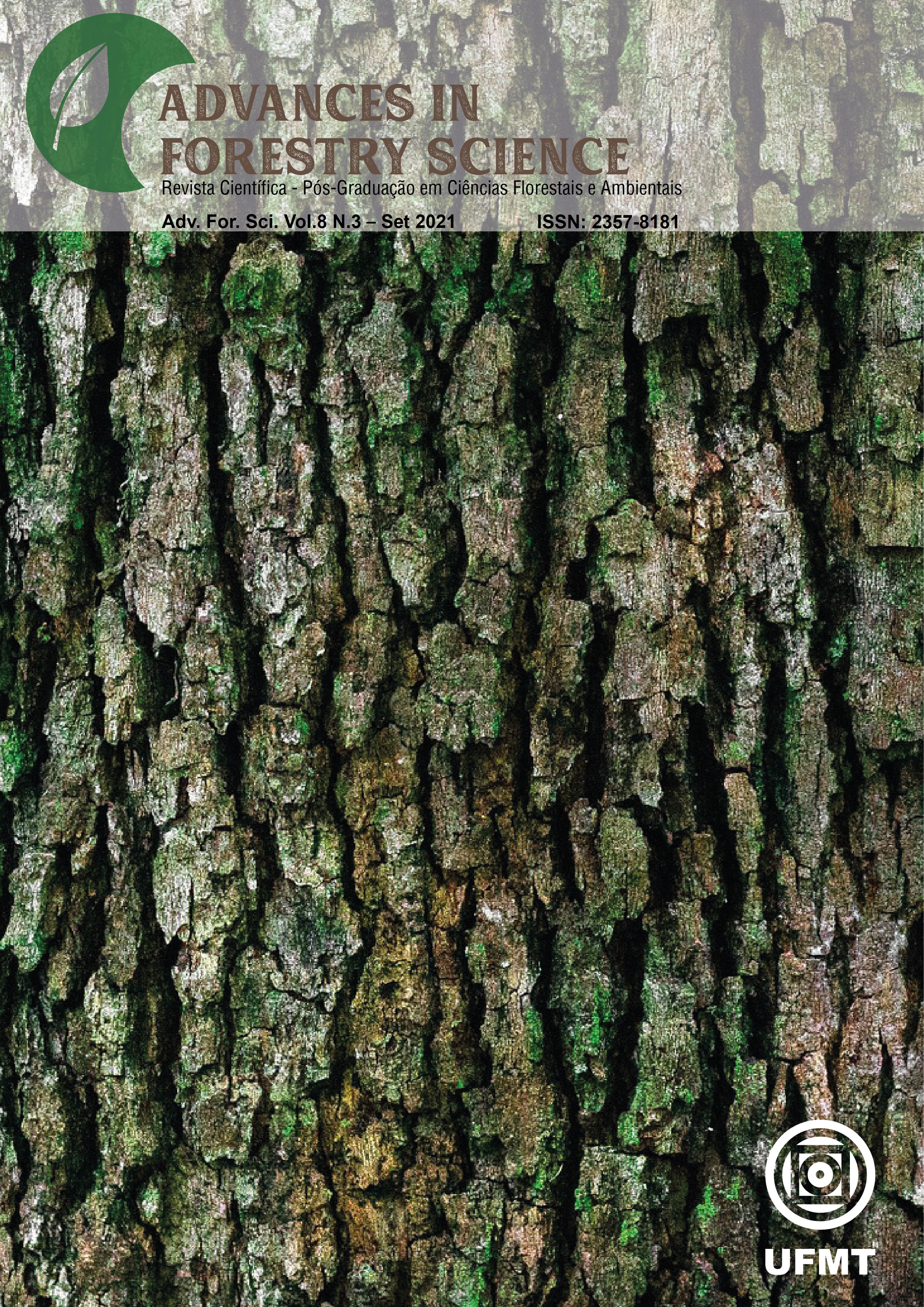Colorimetric characterization of Amazonian tropical hardwood floors
DOI:
10.34062/afs.v8i3.12533Abstract
: Wood color is a decisive characteristic in the choice of flooring by consumers. The objective of this study was to perform the colorimetric characterization of floors from five tropical Amazonian species: Dipteryx odorata (“cumaru”), Handroanthus sp. (“ipê”), Hymenaea courbaril (“jatobá”), Astronium lecointei (“muiracatiara”), and Bowdichia virgilioides (“sucupira-preta”), as well as to correlate the colorimetric parameters with the basic density of the wood. The colorimetric characterization was determined on the upper tangential face of the floors, obtaining the colorimetric parameters L* (brightness), a* (green-red chromatic coordinate) and b* (blue-yellow chromatic coordinate), based on the CIEL*a*b* system, and the parameters C (saturation) and h* (paint angle) were calculated. The results were submitted to analysis of variance and Tukey's test (p≤0.05) to verify differences between species, and Pearson's correlation between colorimetric parameters and wood basic density was evaluated. The colorimetric parameters varied among the species, with L* from 47.43 to 63.08; a* from 6.50 to 13.52; b* from 17.74 to 26.16; C from 18.89 to 29.31; and, h* from 61.56 to 69.86 and these showed low variation within the same species. We conclude that the wood floors of the species “cumaru”, “ipê”, and “sucupira-preta” are dark and those of “jatobá” and “muiracatiara” are light. There is an inverse correlation between the basic density and the luminosity (L*) of the evaluated woods. Colorimetry can be used as an auxiliary criterion for classifying wood for flooring production.
Downloads
Published
Issue
Section
License
All copyright must be assigned to the Federal University of Mato Grosso.

